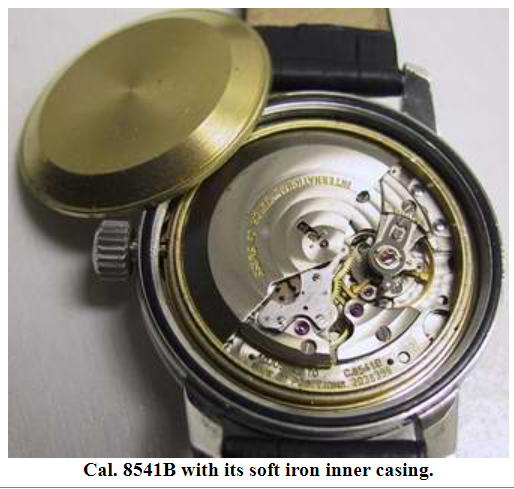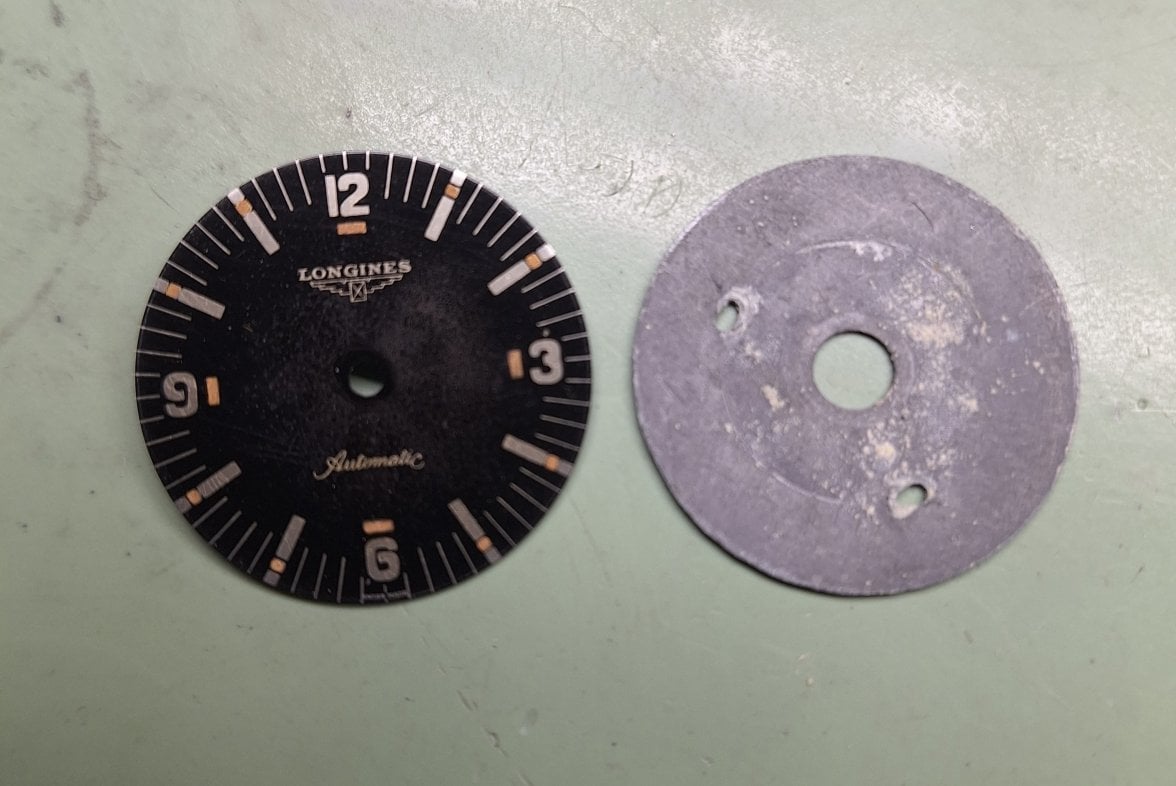J_pilot
·Hi all, wanted to share an interesting discovery/quirk of at least the 7150-1 and possibly others in the diver lineup.
Reviewing mitkawatch’s YouTube service of a 7150-1 (link below) the other night, I was surprised at 9:20 when he removed what appears to be a dense metal plate (steel, iron, lead?), perforated for the dial feet, from the backside of the dial. He identifies it as a spacer, which made sense to me at the time, but in reviewing a 1964 USA catalog description (thank you Peter’s Vintage Longines Watches) of what appears to be the same reference, mention is made of an “anti-radiation shield under dial”, which surely is referring to the same metal plate observed in the servicing video.
Curious if this has been discussed before on OF or elsewhere (couldn’t find anything with a quick search). Are we thinking this design choice is a regular spacer (cleverly marketed as a feature), a genuine measure to mitigate the understood concerns around radium lume, or incorporated to serve some other purpose - anti-magnetism, for example? Furthermore, is anyone aware of a similar “feature” on other watches, Longines or otherwise?
Thanks!
mitkawatch 7150-1 Cal. 290 service:
1964 Longines Catalog USA, from Peter’s Vintage Longines Watches: https://www.vintagelongines.com/index.html#brochure13
Reviewing mitkawatch’s YouTube service of a 7150-1 (link below) the other night, I was surprised at 9:20 when he removed what appears to be a dense metal plate (steel, iron, lead?), perforated for the dial feet, from the backside of the dial. He identifies it as a spacer, which made sense to me at the time, but in reviewing a 1964 USA catalog description (thank you Peter’s Vintage Longines Watches) of what appears to be the same reference, mention is made of an “anti-radiation shield under dial”, which surely is referring to the same metal plate observed in the servicing video.
Curious if this has been discussed before on OF or elsewhere (couldn’t find anything with a quick search). Are we thinking this design choice is a regular spacer (cleverly marketed as a feature), a genuine measure to mitigate the understood concerns around radium lume, or incorporated to serve some other purpose - anti-magnetism, for example? Furthermore, is anyone aware of a similar “feature” on other watches, Longines or otherwise?
Thanks!
mitkawatch 7150-1 Cal. 290 service:
1964 Longines Catalog USA, from Peter’s Vintage Longines Watches: https://www.vintagelongines.com/index.html#brochure13
Edited:


